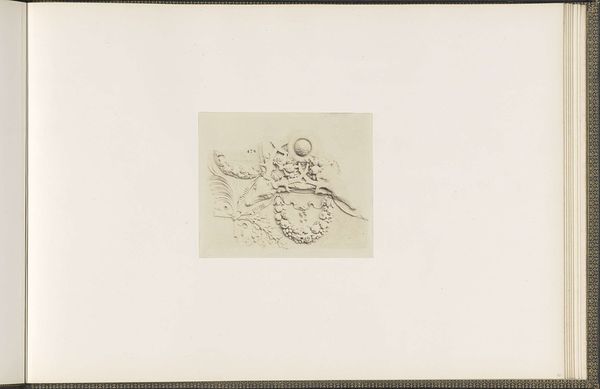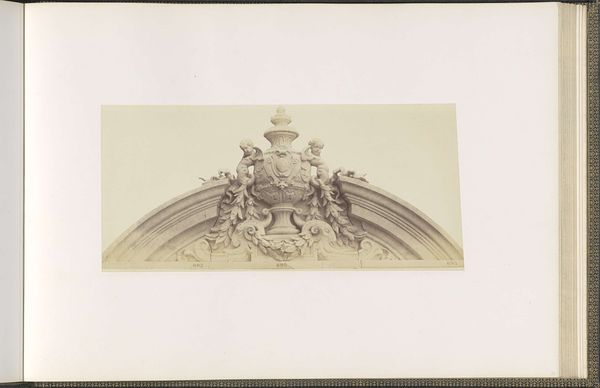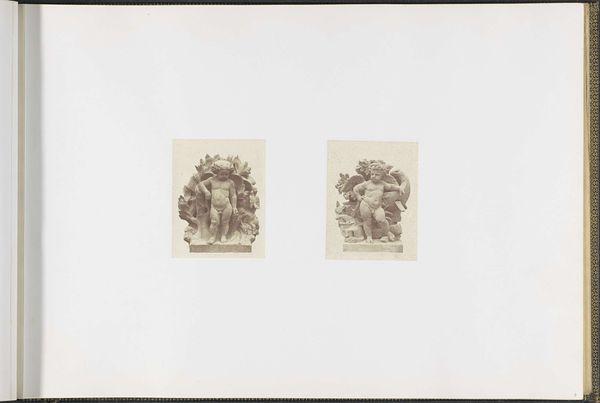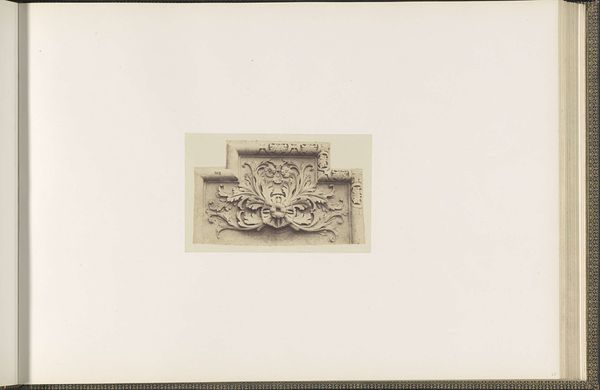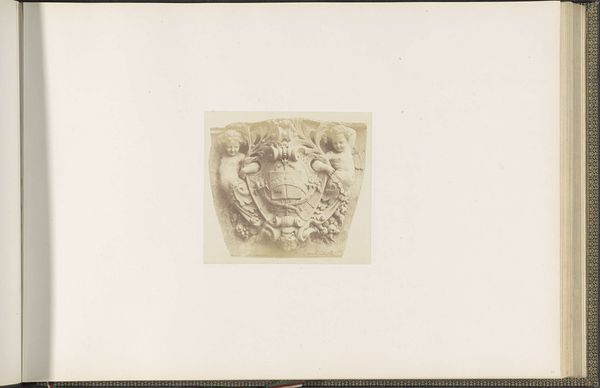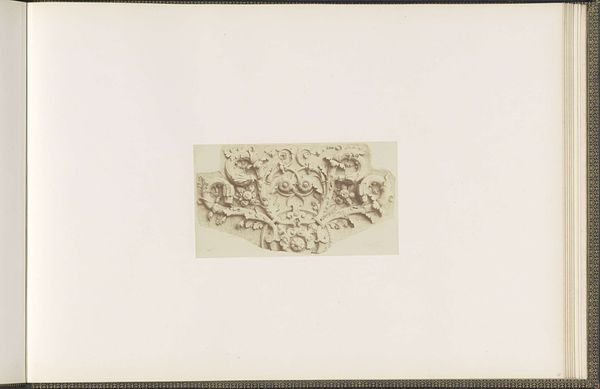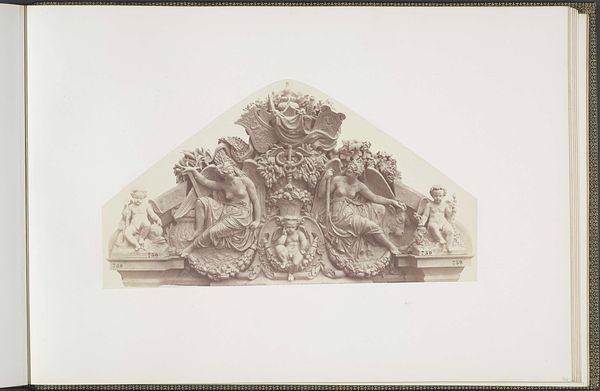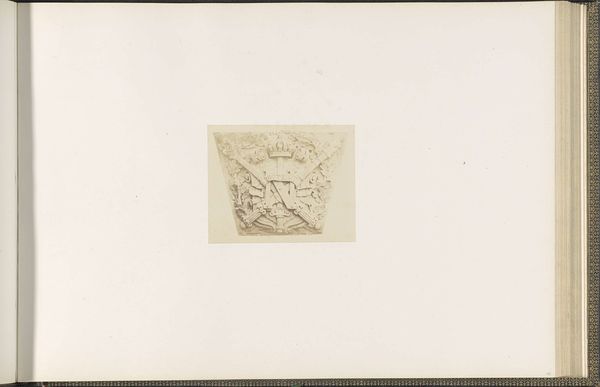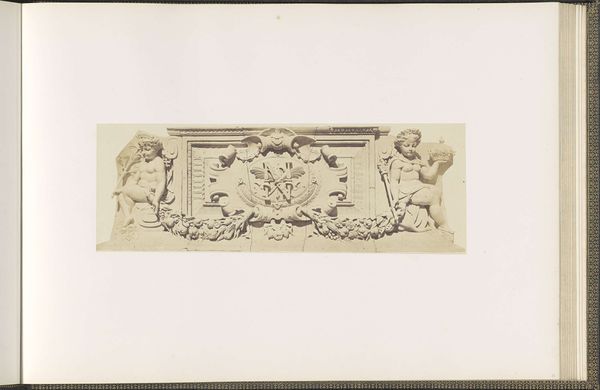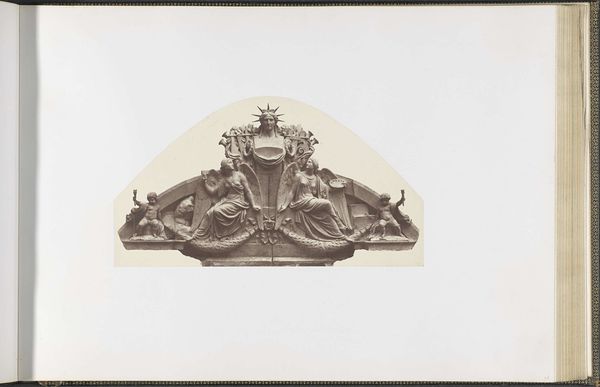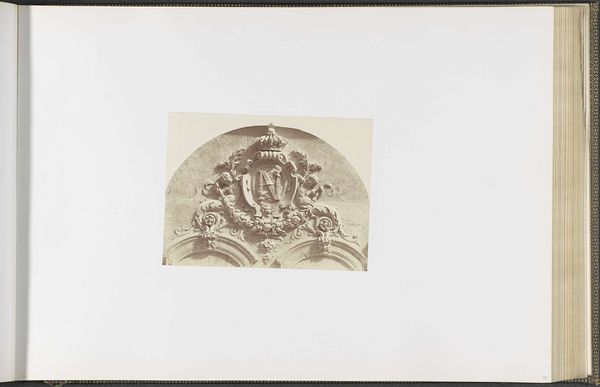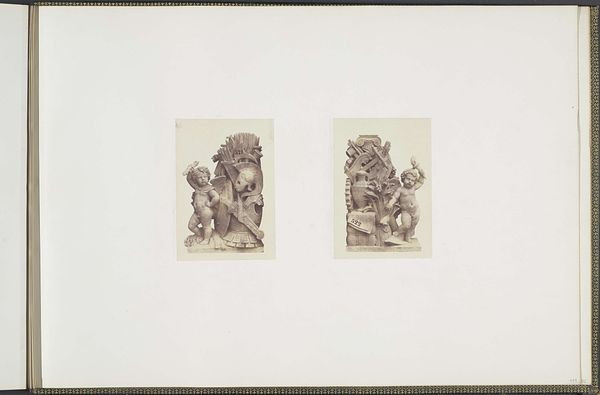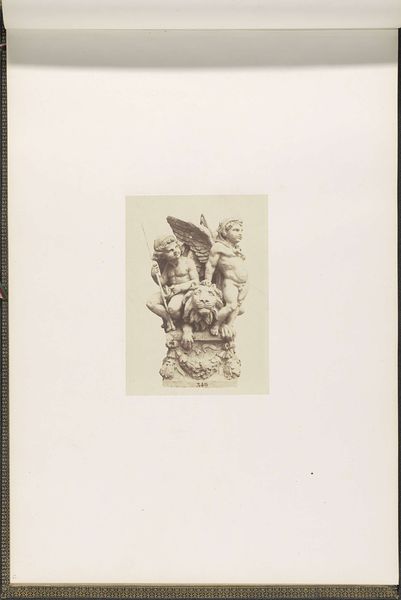
Detail van een gipsmodel voor de versiering van het Palais du Louvre c. 1855 - 1857
0:00
0:00
print, photography, sculpture, plaster, architecture
#
neoclacissism
# print
#
photography
#
sculpture
#
plaster
#
architecture
Dimensions: height 376 mm, width 523 mm
Copyright: Rijks Museum: Open Domain
Curator: We are looking at "Detail van een gipsmodel voor de versiering van het Palais du Louvre," a photograph by Edouard Baldus from around 1855 to 1857. The work depicts a plaster model, intended as architectural ornamentation for the Louvre. Editor: It strikes me as neoclassical yet somewhat unsettling. The muted tones and rigid symmetry give it a ghostly presence. The details are incredibly ornate, and the texture almost makes you want to reach out and touch it. Curator: Baldus expertly uses photography here to document and almost immortalize this decorative fragment. Notice the crispness of the photographic detail and how the composition leads your eye to follow the flowing lines of the plasterwork. The balance of light and shadow defines the form perfectly. Editor: Considering the historical moment, one can see this photograph as a representation of imperial ambition, mirroring the Louvre's grand redesign under Napoleon III. It begs questions: Who was this intended for? And what did its presence in such a public place intend to convey about power and access? The rigid formality screams privilege. Curator: Yes, and formally speaking, that tension arises through the stark contrast between the subject matter—a fragment of idealized beauty—and the photographic medium itself. Baldus transforms an ephemeral object into a lasting document, imbued with meaning. The meticulous balance emphasizes a deliberate aesthetic choice to echo classicism. Editor: Exactly, yet what does it mean to take this classical model into this time of mass industrialization? How do we relate it to the broader project of colonialism and its effect on a rapidly transforming Parisian landscape? Its photographic capturing allowed it to circulate among the burgeoning bourgeoisie, signifying more than simply its material, and transforming into more than it would be merely displayed on a wall. Curator: A poignant point; both literally and figuratively highlighting its intended aesthetic value. Editor: Ultimately, the plasterwork serves as a powerful artifact, showcasing Baldus’ masterful technique, and as a visual record revealing underlying currents of 19th-century socio-political ideals and agendas.
Comments
No comments
Be the first to comment and join the conversation on the ultimate creative platform.
